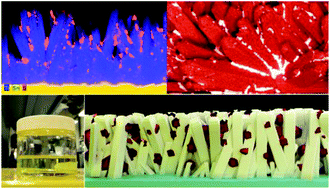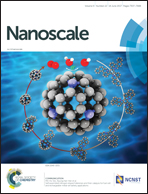Nanostructural and photo-electrochemical properties of solution spin-coated Cu2ZnSnS4–TiO2 nanorod forest films with an improved photovoltaic performance†
Abstract
Cu2ZnSnS4 (CZTS), other than in standard p–n junction device architecture, can be employed as a broad light absorber upon coating onto a wide bandgap electron conducting TiO2 film. Earlier CZTS sensitized TiO2 films have yielded low photoconversion efficiency and Voc. In this work, a water–ethanol solution spin coating approach has been applied to directly deposit CZTS nanocrystallites on rutile TiO2 nanorods grown on an FTO substrate (TNR) for evaluation in a sensitized solar cell configuration. The FTO@TNR@CZTS photoanode following controlled annealing is shown to exhibit improved photovoltaic properties. Focused-ion beam cross-sections of CZTS nanocoating onto TiO2 nanorod forest films have revealed nanoscale morphological details and electrochemical impedance spectroscopy helped identify TiO2 nanorod film growth characteristics for a reduced charge recombination. The band alignment of CZTS and TiO2 has been determined by XPS helping to explain the origin of Voc deficit. An all-solid state device featuring spiro OMeTAD as HTM and CdS as a buffer layer has been designed with 2% efficiency.



 Please wait while we load your content...
Please wait while we load your content...